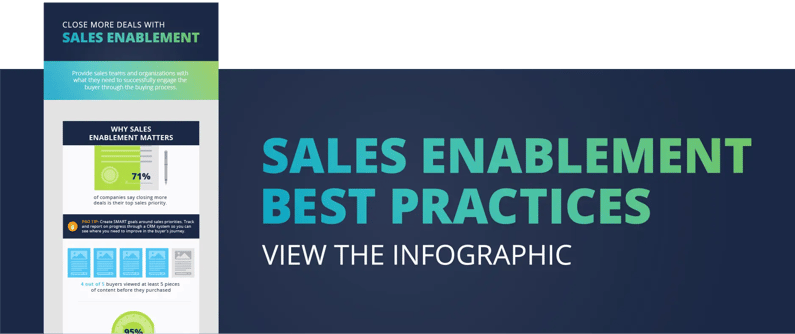Sales Enablement: Close More Deals with Effective Sell Sheets
 Krista
|
Krista
|

Today, 71% of companies say closing more deals is their top sales priority, but 65% of sales reps say they can’t find content to send to prospects. One good way to remedy this is through the creation of sell sheets.
Sell sheets (or sales sheets) are short, usually single page, documents that are designed for sales enablement purposes to give the critical facts about your new product or solution, how it works and why the audience should care. They are often used at trade shows or events, sales presentation, website downloads, or even in direct mailings.
When creating a sell sheet it's important to know what you are trying to do and why. Where is your audience at when they receive this sell sheet? Are they ready to buy or are they still in research mode? This can affect the overall tone and information provided in the sheet.
Fundamentals: When putting together a sell sheet these are the fundamental pieces to keep at the forefront of your mind:
Simplify: Think of these somewhat like a printed elevator pitch it needs to be concise and your audience needs to “get” it in a short period of time. In a typical firm with 100-500 employees, an average of 7 people are involved in most buying decisions. This group of stakeholders needs to be able to pass the info along to others and feel confident they will be able to understand it without a long winded pitch.
Unique Selling Proposition (USP): Identity what makes your product or solution different in the sell sheet. This will help make it clear why they should care and how it will help them.
Hierarchy: Don’t make people search for information. As tempting as it is to include everything, try to choose the most important benefits and create flow through the page that leads the eye through the product sales sheet.
Branded: The sales sheet should look and feel like your brand. The audience should know exactly who it is from because the style and the tone and message should align with the organization.
Architecture:
Catchy but CLEAR headline: Having a cute headline is great, but if it's too cute or clever you will lose your audience before you even get started. Make sure your headline is clear and follow-up it up with a sentence or two of summary or supporting copy that addresses the problem you're solving, and why the audience should care.
Key Selling Features:
Step by Step Process: Boil down your process into short headlines and brief a description. These don’t have to say everything, just give the gist of how it works. Keep in mind these steps should feel simple and easy even if in reality it is a technical or complicated.
Benefit Driven Bullets and Body Copy: Break down your key benefits into 3 or 4 sections. These should connect with the problem you're solving for the user, not just be a features list.
Social Proof or Re-Enforcing the Message: This is a good place for a stat on your product/solution or even a testimonial from a happy customer. This lets the audience know others have used this product/solution and are happy with it.
Call To Action (CTA): What do you want people to do next? Make sure you include a message or action to lead people in the right direction. This could be a URL, email, phone number or destination.
Make your documents trackable: Technology today allows us to track documents, phone numbers and emails, giving us insight into how long a prospect viewed a document, when and how many times they opened it and if they sent it to anyone else. This can be invaluable information when trying to decide where to spend your sales energy.
Things to Remember:
Not too much copy: These are one-page documents, not a book. Fight the urge to say it all and only say what matters. These are often used during a sales presentation to summarize what is being told or should be used as a warm up document that will intrigue someone to learn more. Make sure the content fits the context.
Know your audience: Make sure you are speaking to the right person, address their specific problems. If you have multiple audiences then you may need multiple documents to address the different needs.
Use graphics to reinforce text: Use graphics as a quick reference of text, this helps keep the document interesting and scannable by breaking up the text. It’s also good to use graphs and charts to show stats, and icons to show benefits or processes.
Need an agency partner to help out with sales enablement solutions like sell sheets, presentations, videos, CRM, training, or technology integrations? Talk to TANK. We're here to help.
Sources: Brevet Aberdeen 2013, Kapost
Subscribe to Our Blog
Stay up to date with the latest marketing, sales, and service tips.


